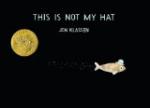|
This section contains 4,925 words (approx. 17 pages at 300 words per page) |

|
SOURCE: "Reluctant Lords and Lame Princes: Engendering the Male Child in Nineteenth-Century Juvenile Fiction," in Children's Literature: Annual of the Modern Language Association Seminar on Children's Literature and The Children's Literature Association, Vol. 21, 1993, pp. 3-19.
In the essay that follows, Richardson uses psychoanalytic theory to demonstrate that, contrary to contemporary and even late-Victorian notions of masculinity, children's literature in the mid-nineteenth century often imagined a "manliness" that was almost effeminate.
Wordsworth's phrase "The Child is Father of the Man," from his self-authorizing epigraph to the "Immortality" ode, could equally well introduce any number of nineteenth-century representations of childhood. What in Wordsworth's time are still relatively new-fangled notions—that childhood is a period of crucial psychic and moral development, and that adult life is largely shaped, if not quite determined, by childhood experience—grow increasingly self-evident as the nineteenth century progresses, eventually to become codified in the work of...
|
This section contains 4,925 words (approx. 17 pages at 300 words per page) |

|


